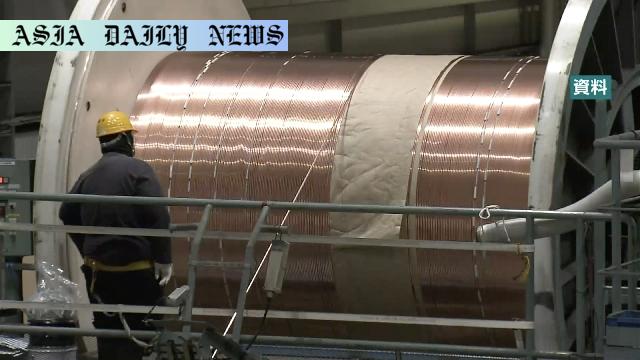Undersea cables: Japan to decentralize landing stations for secure and stable international communications.
- Japan depends on undersea cables for 99% of international communications.
- Landing station decentralization aims to reduce risks from concentrated areas.
- Development funds will support new cables and build more landing stations.
- Global context of damaged cables points to growing geopolitical concerns.

Undersea Cables: The Backbone of Global Communications
In the modern digital era, undersea cables play a pivotal role as the backbone of global communication. Over 99 percent of Japan’s international data flows through these cables, underscoring their critical importance. With the advancement of technologies like generative AI, which demands significant bandwidth, undersea cable infrastructure is becoming increasingly strained. Japan’s Internal Affairs and Communications Ministry has recognized this growing dependency and taken decisive action to decentralize its landing stations. By diversifying the geographic distribution of these landing sites, Japan aims to mitigate risks posed by natural disasters, geopolitical threats, or sabotage. This shift reflects the country’s prioritization of economic security and resilience in the face of an uncertain global environment.
The Risks of Geographic Overconcentration
Currently, many of Japan’s undersea cable landing stations are concentrated around the Boso Peninsula near Tokyo and the Shima Peninsula in central Japan. While these regions have served as critical hubs, their centralization poses significant threats. A natural disaster such as an earthquake or tsunami in these areas has the potential to cripple Japan’s international communication infrastructure. Additionally, rising geopolitical tensions have highlighted risks of malicious interference with undersea cables. Recent reports of cable damages in the Baltic Sea and off Taiwan allegedly linked to the activities of state actors like China and Russia bring these vulnerabilities into sharper focus.
Government Interventions to Strengthen Infrastructure
To address these vulnerabilities, Japan’s communication ministry has pledged financial support for the modernization and decentralization of its cable network. Using digital infrastructure development funds, the government plans to provide subsidies to construct new landing stations and lay safer, more robust cables. These projects aim to distribute risk geographically and ensure that communication channels remain functional even in the wake of major disruptions. By diversifying its infrastructure, the country hopes to reduce over-reliance on specific regions and build a stronger, more reliable network capable of handling the growing demands placed on it by cutting-edge technologies like AI.
Geopolitical Factors Driving Renewed Focus
The movement to secure undersea cable infrastructure is not limited to Japan. Globally, incidents of sabotage and accidental damage to these critical assets have become an increasing concern. In the Baltic Sea and Taiwan, recent incidents of suspicious cable damage hint at risks stemming from geopolitical rivalries. Both China and Russia have been accused of deliberate attempts to compromise the security of international data flows. As global tensions grow, the potential for such acts of disruption only heightens. Japan’s proactive steps not only address its domestic priorities but also position it as a responsible player in ensuring global communication security.
The Role of Infrastructure in Japan’s Economic Security
Japan’s commitment to decentralizing its undersea cable infrastructure highlights a broader focus on reinforcing economic security. By ensuring that international communications remain uninterrupted, the country is safeguarding key sectors, including finance, trade, and technology, which depend on stable and resilient data flows. The investment in infrastructure is not merely a defensive tactic; it will also pave the way for Japan to lead in advancing communication technology, setting new benchmarks in reliability and efficiency.



Commentary
The Unseen Importance of Undersea Cables
Undersea cables are an essential but often overlooked facet of our interconnected world. As Japan takes steps to fortify its infrastructure, it underscores just how integral these communication highways are to modern society. Unlike satellites, which many assume dominate global communication, undersea cables handle almost all of the world’s data exchanges. From financial transactions to video calls, this hidden network operates as the lifeblood of international communication. Recognizing the risks of overdependence on centralized hubs for these cables, Japan’s proactive approach emphasizes the critical need for redundancy and diversification in such systems.
The Growing Relevance of Cybersecurity and Physical Resilience
In recent years, the issue of cybersecurity has taken center stage for governments and corporations worldwide. However, physical resilience, especially concerning undersea cables, has often been a secondary concern. Japan’s decision to allocate resources toward decentralizing its landing sites is a wake-up call for the global community. It recognizes that the strongest digital firewall is irrelevant in the face of physical disruptions caused by natural disasters or state-sponsored sabotage. This strategy is as much about protecting against unforeseen emergencies as it is about preparing for evolving geopolitical realities.
A Global Model for Infrastructure Resilience
Japan’s comprehensive approach can serve as a model for other nations dependent on undersea cables. Collaboration, international agreements, and transparency are essential for ensuring these vital links remain operational under all circumstances. Moreover, Japan’s move to earmark digital infrastructure development funds demonstrates a clear alignment of resources with strategic priorities. By addressing vulnerabilities and enabling technological progress, the country is setting a precedent for resilient infrastructure in a rapidly digitalizing world.
Conclusion
Through its focus on undersea cable decentralization, Japan is not only enhancing its own communication system’s resilience but also contributing to global stability. The interconnected nature of modern communication underscores that no country operates in isolation anymore. Japan’s renewed investment in this crucial infrastructure is both prudent and forward-thinking, positioning it as a leader in tackling the challenges of tomorrow.